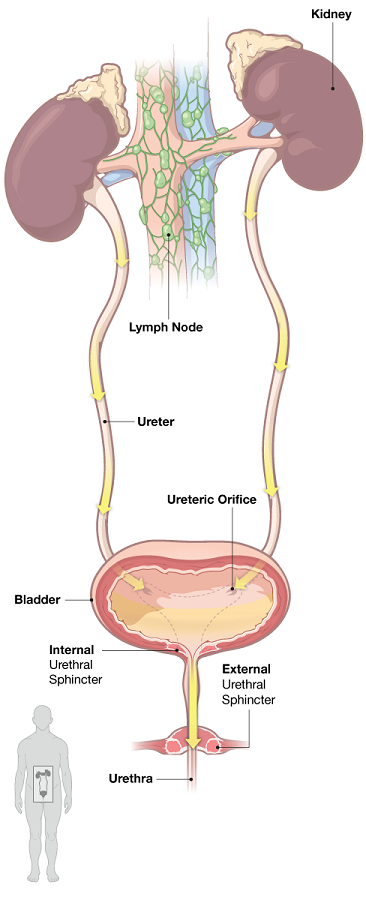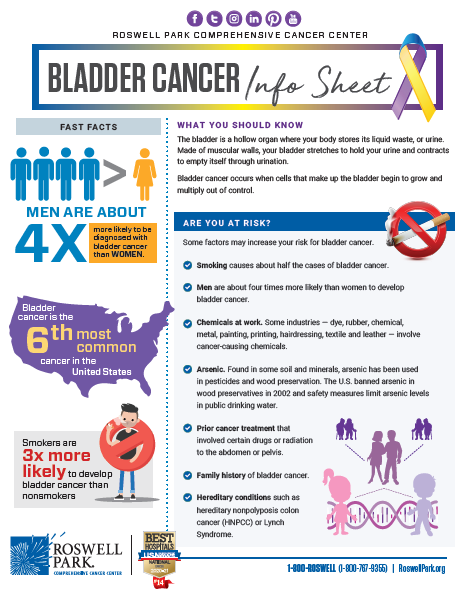Your bladder is the organ where urine collects and is stored until it’s released from the body by urinating. Bladder cancer occurs when cells that make up the bladder lining begin to grow abnormally. As these abnormal cells multiply, they form a cluster of abnormal cells, called a tumor.
Your bladder and its neighbors
Learning a little about your anatomy will help you understand where your cancer is located and how it affects your body. The bladder is part of your urinary system which is responsible for collecting and removing liquid waste from the body. The term genitourinary system refers to your urinary and reproductive systems together, and bladder cancer may affect both these systems.
The kidneys are two organs located inside your belly, towards your back, one on either side of the spine. The kidneys remove toxins from the blood and regulate water content by making urine.
The ureters are two long tubes that transport urine from the kidneys to the bladder, entering the bladder through openings called uretic orifices.
The bladder is located in the pelvis between your hip bones. In women, it’s located in front of the uterus, and in men, it’s in front of the rectum. Urine is stored here until it can be passed out of your body. The bladder is made of three layers of tissue:
- Inner layer (lining) is made of cells called transitional cells. These stretch as the bladder fills with urine and shrink as the bladder empties.
- Middle (muscle) layer is made of muscle tissue which contracts to squeeze urine out of the body.
- Outer layer consists of fat, fibrous tissue and blood vessels which cover the bladder.
Nine out of 10 Americans with bladder cancer have a cancer type that begins in the transitional cells of the bladder’s inner lining.
The urethra is a small tube that allows urine to travel from the bladder to the outside of your body.
The internal sphincter, located at the junction between the bladder and urethra, controls the flow of urine out of the bladder. When the internal sphincter is working properly, our bodies control it involuntarily (we don’t have to think about it).
The external sphincter, located on the urethra closer toward the outside of the body. This sphincter we control voluntarily, when we want to urinate.
The lymph nodes are small, lima-bean-shaped tissues within the lymphatic system, a network of hundreds of nodes and vessels, through which lymph fluid travels.
Bladder cancer risk factorsBladder cancer symptoms

